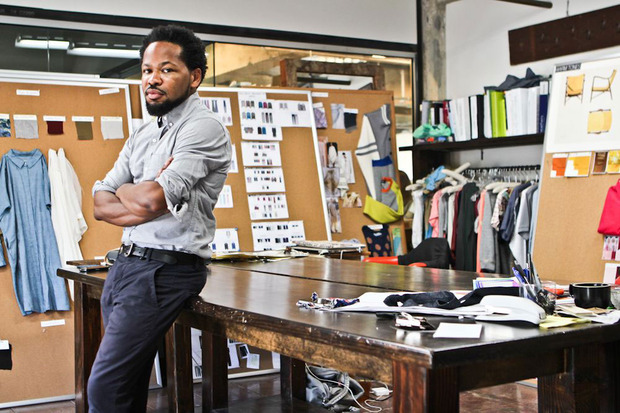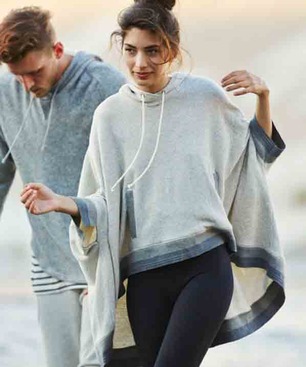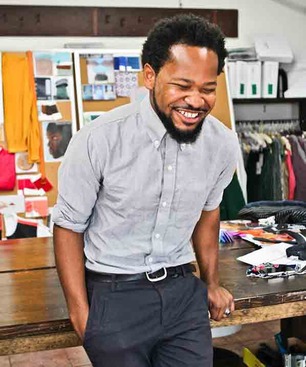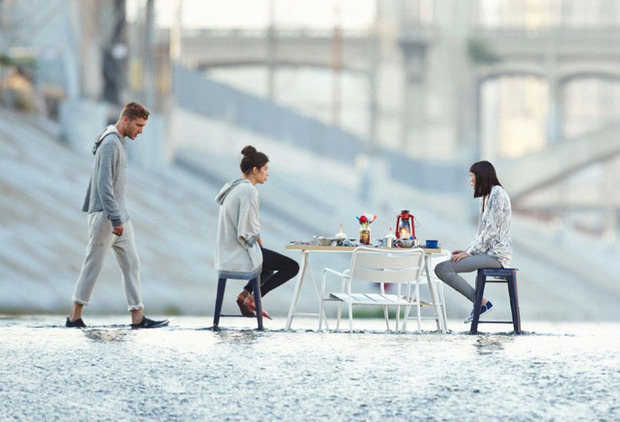Interview: Orondava Mumford of Alternative Apparel
The Design Director on education, innovation and the evolution of the brand


Born in rural Kentucky and raised on a farm he describes as, “in the woods, down a dirt road,” fashion designer Orondava Mumford has worked with some of the world’s most iconic brands. After lending his keen eye to Converse and acting as Global Design Director at Levi’s—working on special projects and the global menswear line—Mumford recently moved to join the increasingly innovative and sustainable Alternative Apparel. Getting his start in apparel design after his mother taught him to make a dress for a girlfriend who was a professional dancer (which led to costume design), Mumford’s interdisciplinary background plays into his new home’s varied culling of influences for their comfortable yet stylish collections. We caught up with Mumford recently for a look at the brand’s influences, processes and eye on the future.


What role does industrial design play in your work at Alternative Apparel?
Design thinking and just taking everything where form really should follow function. When you’re doing industrial design, there’s always a problem to solve. Whereas oftentimes in fashion it’s different; you start with an idea in mind, or there are colors or styles that are in season and you kind of force a point of view on something. However in industrial design it’s really something like, “How are you supposed to hold that cup? Is it ergonomic?” You kind of think of things like that differently.
I think the biggest influence specifically to Alternative Apparel is the mix of Danish architecture and Japan. Not so much the actual Japanese fabrics (though, yes, in some cases) but more so the process—specifically the innate aesthetic that Japan tends to have, culturally where they’re always connected to the history yet they’re so futuristic at the same time. It’s the perfect balance where they’re receptive to other cultures, but they just tend to absorb something like Americana and then spit it back out better than we do. [laughs] It’s really inspiring when a whole culture can do that.

Can you expand on the Danish influence?
The thing with Danish design and architecture—it can be rustic and modern, but it’s not so serious. A designer both me and Erik Joule [President and Chief Merchandising Officer at Alternative Apparel] love, Finn Juhl—I didn’t realize Hans Wagner was influenced by him, because I’m a huge Wagner fan. We were out researching for Fall 2014 and we visited the Finn Juhl showroom and I started going back to that. It’s amazing because those designs were done to be extremely comfortable first, then aesthetic. So there’s a chair that’s supposed to be this swooping swan of a chair, but it’s designed to just be comfortable, to lay on. So it makes sense for us to draw from a Danish influence because it’s about something being comfortable while aesthetically pleasing.
It appears the direction of Alternative Apparel is changing. Can you tell me a bit about that and how your design style is playing a role?
I think it’s more of an evolution the brand is going through, that’s spearheaded by its origins. We’ve always had a huge emphasis on fabrication and the fabrics themselves and what the feeling of that fabric is going to be. There’s a commitment to the sustainability aspect—regardless if that’s something the customer is interested in, we’re committed to it. So I think from its inception, that’s what the brand has been about and at this point in the evolution it’s kind of like going back to that and building upon it. I think the freshest part of what’s happening is that we’re trying to be more of a platform for not just product but how we work with other people; how we connect, engage and inspire a community. We’re also looking at how our physical locations can be part of the brand as well.
Coming on with Erik and the collaborative spirit he brings, we’re really working with cross-functional teams. All of our creative team is in one open space and that really lends itself to disruption, which for us is a really important thing. I think you’ll see a lot more disruption of how we’re building product as well as how we’re speaking to consumers and how we’re building partners in the industry—working on collaborations that might be completely outside of products.

What types of collaborations are in the works?
The one we’re most excited about is what we’re doing in Peru. We’ve been working in Peru for over 10 years now, but in the last six months we’ve made two trips. We’re starting to build proprietary fabrics and yarns—specifically from the yarn up. It’s Pima cotton—one of the inherent materials in our brand—and one of the things we wanted to do was challenge ourselves to maintain the sustainability and eco-friendly nature of the brand but push it a little further. For instance for the first time we have 100% organic Pima cotton coming out of Peru. We challenge ourselves to innovate within the fabric itself, by taking one yarn and developing six different fabrications. Peru is extremely innovative when you go in and really partner with people. Education is something we talk about a lot at the office, educating ourselves and our consumers on the process, impact and history of fabrics—not just what we do and how we do it, but why we do things a certain way.
For more about Alternative Apparel and to see their latest line, visit them online.
Portraits by Kawai Matthews, all other images courtesy of Alternative Apparel












